Papillomas on the neck do not cause any noticeable discomfort, but they affect the appearance. These neoplasms grow when the human papillomavirus (HPV) enters the body. The only exception is the growths, which are often damaged. To get rid of papillomas on the neck, specialized (usually surgical) intervention is required.
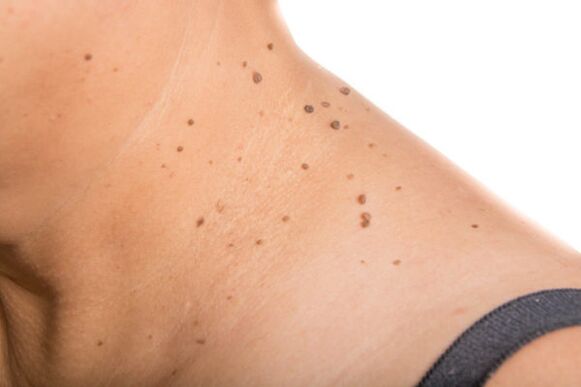
causes
Papillomas are benign neoplasms that result from an HPV infection. Doctors isolate more than a hundred viruses that can cause such growths to appear on the body. Often hanging warts of small size appear on the neck, they reach 2-3 cm in diameter.
Infection with human papillomaviruses occurs through direct contact with an HPV carrier. The pathogen can also be transmitted through personal care items or clothing. The virus can enter the child's body in the womb or during childbirth.
The likelihood of papillomas directly depends on the state of immunity. If the body's defenses are weakened, the first growths appear a few days after infection.
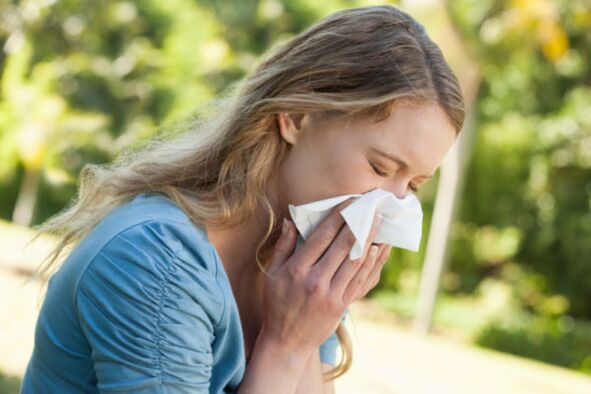
The reasons for the appearance of neoplasms on the neck are:
- frequent damage to the skin epithelium;
- allergic reaction;
- severe stress;
- Respiratory diseases, helminthic invasions;
- long-term use of a number of drugs;
- Obesity;
- Bad habits;
- Failure to comply with hygiene regulations.
In women, hormonal imbalance during pregnancy, menopause or due to the use of contraceptives is one of the most common causes of growths to develop.
Often, when small growths appear on the neck, no special treatment is required. In the absence of provoking factors, such warts will go away within three years without external intervention.
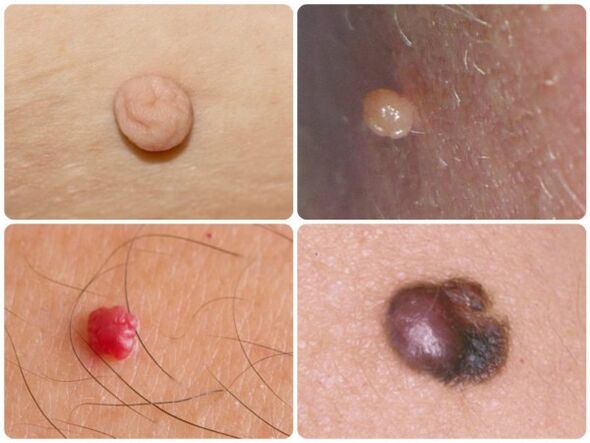
Types and Symptoms
Of all types of papillomas on the neck, growths of the following types appear:
- Filiform- look like small bumps with a yellowish surface. In the future, a leg will appear, through which the growth will be attached to the skin. Filiform papillomas are flesh-colored or light brown in color.
- apartment- Formations of this type protrude slightly above the cervical surface. The color of flat growths is no different from the color of neighboring tissues. Over time, they fuse together, causing the affected area to enlarge and sometimes itch.
- Keratopapillomas- occur mainly in people over 30 years of age, are round or longitudinal.
- Seborrheic- are distinguished by the presence of a flaky surface. These growths are often painful.
- Simple (vulgar)- This type of papilloma is localized on the upper limbs, but they also sometimes grow on the neck or face. The growths look like rounded warts that protrude significantly above the skin.
Most papillomas are single. However, with a violation of the affected area or against the background of severely weakened immunity, the virus spreads to new areas, which leads to the appearance of several neoplasms.

The growth of papillomas is not accompanied by severe symptoms. In rare cases, the activity of the virus causes:
- Itching;
- Combustion;
- Pain.
When the problem area is injured, the affected areas begin to bleed.
Possible consequences
Complications caused by the activity of the papillomavirus are often caused by the actions of the carrier of the infection. Common injuries from growths cause:
- Development of papillomatosis. This pathology is characterized by multiple growths that form on a small area of the body. In extreme cases, the entire neck area is affected. This is explained by the fact that each wart contains the smallest particles of the virus, which, if the neoplasm is injured, spread to healthy areas.
- Degeneration into a malignant tumor. Malignancy is also more often due to trauma from neoplasms. Damage leads to the development of an inflammatory process in problem areas.
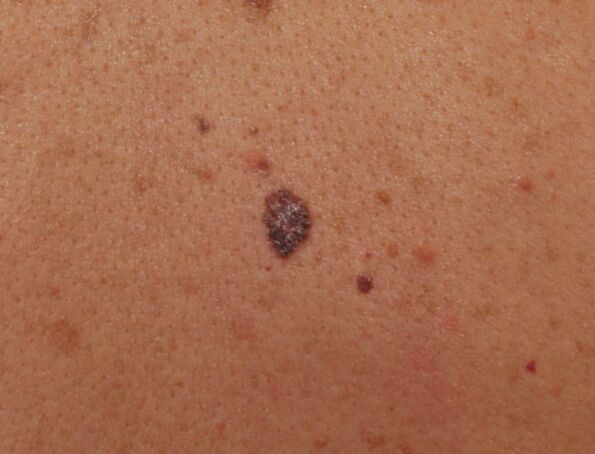
Papillomas on the neck are more often exposed to external influences, as a result of which open wounds form on the skin. Because of this, the affected area is often infected with pathogenic bacteria, which leads to inflammation and suppuration of the epidermis.
Therefore, if the wart comes off and the bleeding begins in the problem area, it is necessary to treat the damaged skin with an antiseptic composition and seal it with a bactericidal plaster. In addition, it is recommended to see a dermatologist within two to three days to rule out complications.
diagnosis
The papillomavirus causes characteristic growths. However, in some cases it is not possible to distinguish warts from other similar neoplasms.
To exclude other diseases that are manifested in the form of rashes, the following diagnostic measures are carried out:
- PCR (polymerase chain reaction). Allows not only to diagnose the presence of a virus in the body, but also to estimate the likelihood of tumor degeneration.
- Histological analysis. It is prescribed when a malignant tumor is suspected.
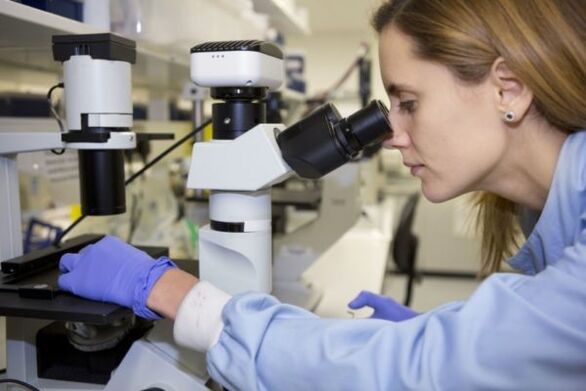
The Digine test is considered to be more effective. This method is highly sensitive and provides information about the presence of papillomaviruses, the strain of infection and the degree of oncogenicity.
Therapeutic Techniques
To remove papillomas on the neck, you need to see a dermatologist. It is not recommended to independently deal with the removal of neoplasms from the skin. This is especially true in the case of multiple tissue damage that indicates an immune deficiency.
Hardware techniques and drugs are used in the treatment of papillomaviruses. The latter copes well with individual growths of small size.
Drug therapy
Drug therapy is mainly carried out using topical preparations.
To quickly remove warts from the throat, you can use special pharmacy products.
The use of medication does not always help to get rid of papillomas. In addition, this method of treatment does not rule out the possibility of neoplasms appearing in the same place.
Hardware techniques
To remove papillomas from the neck, the following hardware removal techniques are used:
- Laser coagulation- allows you to remove neoplasms from the skin with minimal risk of infection or bleeding.
- Cryodestruction- The procedure involves treating problem areas with liquid nitrogen, which destroys tumor cells.
- Electrocoagulation- Tumors are removed by exposure to high frequency electricity. This method is more painful than previously described.
- Radio wave removal- The method allows not only the removal of the tumor, but also the removal of tissue for the subsequent histological examination.
In rare cases, the tumor on the neck is surgically removed.
Ethnosciences
Home treatment can be carried out using folk remedies. Not only do they help remove the smallest of tumors, but they are also effective in fighting large growths.

Coping with papillomas on the neck will help:
- Olive or castor oil. With this tool, problem areas need to be lubricated several times a day;
- Apple cider vinegar or ammonia. Each of these agents must first be applied to a cotton swab and applied to the build-up for a few minutes. The procedure should not be done more than once a day;
- Aloe juice. You need to soak a cotton swab that is applied to problem areas and kept for 4-5 hours.
- Tea tree oil. It is enough to apply two drops of the product to the skin neoplasm daily;
- Tincture of celandine. To prepare it, you need to mix the plant sap with water in equal proportions. The product is infused in a dark place for two weeks. The resulting medicine should be drunk every day, 15 drops.
Regardless of the chosen method of fighting the papillomavirus, treatment must be supplemented with measures to strengthen immunity. To do this, it is recommended to take vitamin complexes and immunomodulators. From traditional medicine, decoctions from herbal preparations of lemon balm, plantain, dandelion root and other plants help to strengthen the immune system.
prophylaxis
It is quite difficult to prevent human papillomavirus infection. But if you follow the rules of prevention, you can avoid the appearance of neoplasms on the body. For this you need:
- wash hands and body daily;
- To eat healthy food;
- Treat diseases in a timely manner;
- to refuse from bad habits;
- lead an active and healthy lifestyle.
If warts appear on the neck, it is recommended that you see a doctor to rule out any malignant neoplasms. It is imperative to consult a dermatologist if the wart has changed color or if there are multiple growths on the skin.

























